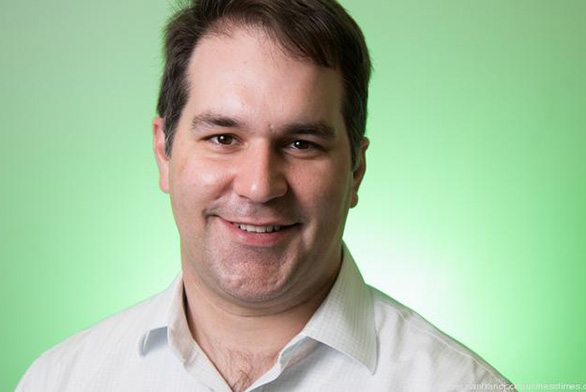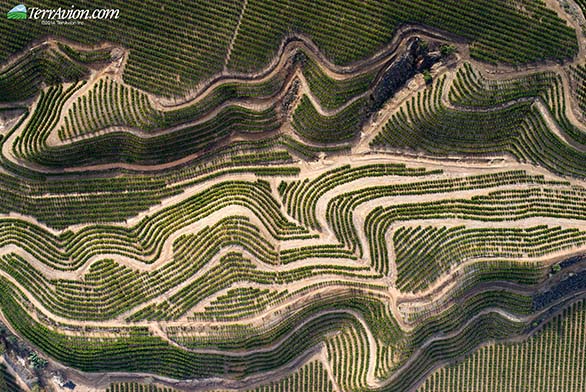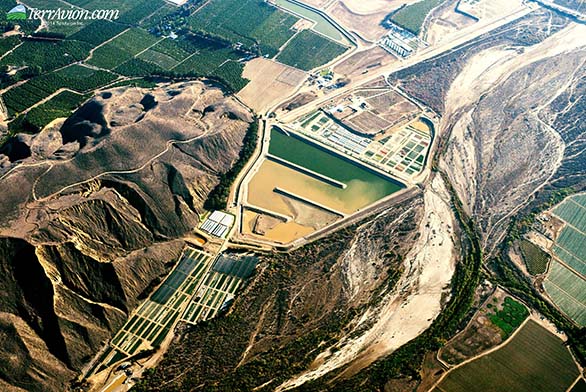Start-Up Soars Over Competition
January 24, 2017 | By Andrew Wice

In the world of agribusiness, the use of commercial drones has become increasingly popular among farmers seeking aerial imagery of their land.
One St. John’s College graduate is bucking that trend.
Robert Morris (SF04) is the CEO of San Francisco Bay-area company TerrAvion, which produces the highest volume of aerial imagery for agriculture in the nation.
The company has reached the pinnacle of the industry by using airplanes instead of drones.
By applying first principles to the economics of the aerial imagery industry, Morris realized that properly employed airplanes would be far more efficient than drones. Flying at a higher altitude, staying in the air longer and stringing together multiple flight paths are accumulative advantages which drone-based services cannot match.
“Dynamics that favor high volume and customer density in imagery production mean that we can keep offering a better and better product for less and less cost per unit—just like computer chips or network links have been doing for decades,” Morris says. “Soon, this will allow us to give tools to farmers for a few bucks that were not even available to the highest generals for billions (of dollars) a decade ago.”
TerrAvion uses the latest innovations in information technologies to electronically deliver detailed maps of farmland with overnight data analysis. That analysis can be rapidly used to optimize irrigation, see disease before it spreads, or maximize the return on investment of fertilizers and herbicides.
TerrAvion allows agribusiness to “farm more land more efficiently, more sustainably, more profitably, and more comfortably,” Morris says, which agricultural companies have been quick to adopt.
Morris was in a unique position to know the strengths and limitations of drones and airplanes. After graduating from St. John’s, Morris served as an officer in the U.S. Army, leading a drone platoon in Afghanistan. He was properly skeptical of the so-called “disruptive” drone technology, and remained stoic when drone-based aerial imagery companies took an early lead.

TerrAvion and its use of planes was first able to gain traction among wine growers on the California coast.
“TerrAvion started operating in vineyards because their early adopters were especially receptive to our service,” Morris says. “Vineyards intentionally stress the vines to create flavor and sugar in the grapes—this gives off a really clear signal in the infrared to monitor from the air and also means grape growers are farming a valuable crop at edge of control—making the stress data especially valuable.”
But now, the company’s success has crested the tipping point. The economy of scale means that TerrAvion has been able to expand at an exponential rate into the nation’s agricultural heartland.
“The majority of our acreage is now east of the Rockies, mostly in corn and soy,” Morris says. “Growers of traded commodities are really focused on efficiency of production and scale, so they are also growing at the absolute limit of what plant science allows. We actually expect Nebraska to be our best market next year because the irrigation practices and crop mix make it super-receptive to what we're doing.”
In Silicon Valley’s hyperbolic scramble for the next paradigm shift, Morris believes innovators with a foundation in the classics possess a deeper insight and a broader overview. This is the value of the St. John’s College education: the ability to withhold judgment while conducting an independent inquiry, and then to act upon it.
“Is the automobile, or telephone, or internet-based retailer more disruptive than geometry, optics, or Christianity? One way to view (the) St. John’s program is as an endless series of case studies on disruptive ideas; ones that put simple technology to shame,” TerrAvion employee Amariah Fuller (SF11) says in an email.
Combining thoughtfulness with decisive achievement remains, for Morris, the essence of what he learned at the Santa Fe campus of St. John’s.
“There are a lot of Johnnies in tech and a lot of techies with a classical bent,” he says.

Students exposed to the St. John’s College method of learning through direct engagement have a decided advantage in modern high-tech business, Fuller says.
“The type of collaborative inquiry we undertake at St. John’s is the best preparation for vague vagaries of the business world. … Getting to the root of what someone is talking about in a collaborative way is where Johnnies shine,” Fuller says. “The most intimidating business concepts fall to pieces when you ask a few simple questions.”
Matriculating in New Mexico has its own particular advantages, Fuller says.
“My favorite aspects of the Santa Fe campus are the views, the quiet, and the focus that the environment creates,” he says.
Fuller is one of several TerrAvion employees who are graduates of St. John’s. In the coming years, Morris expects to “continue to hire more Johnnies as we grow, since they are so adaptable and can work so effectively across disciplines. … We want the ones that love action.”

